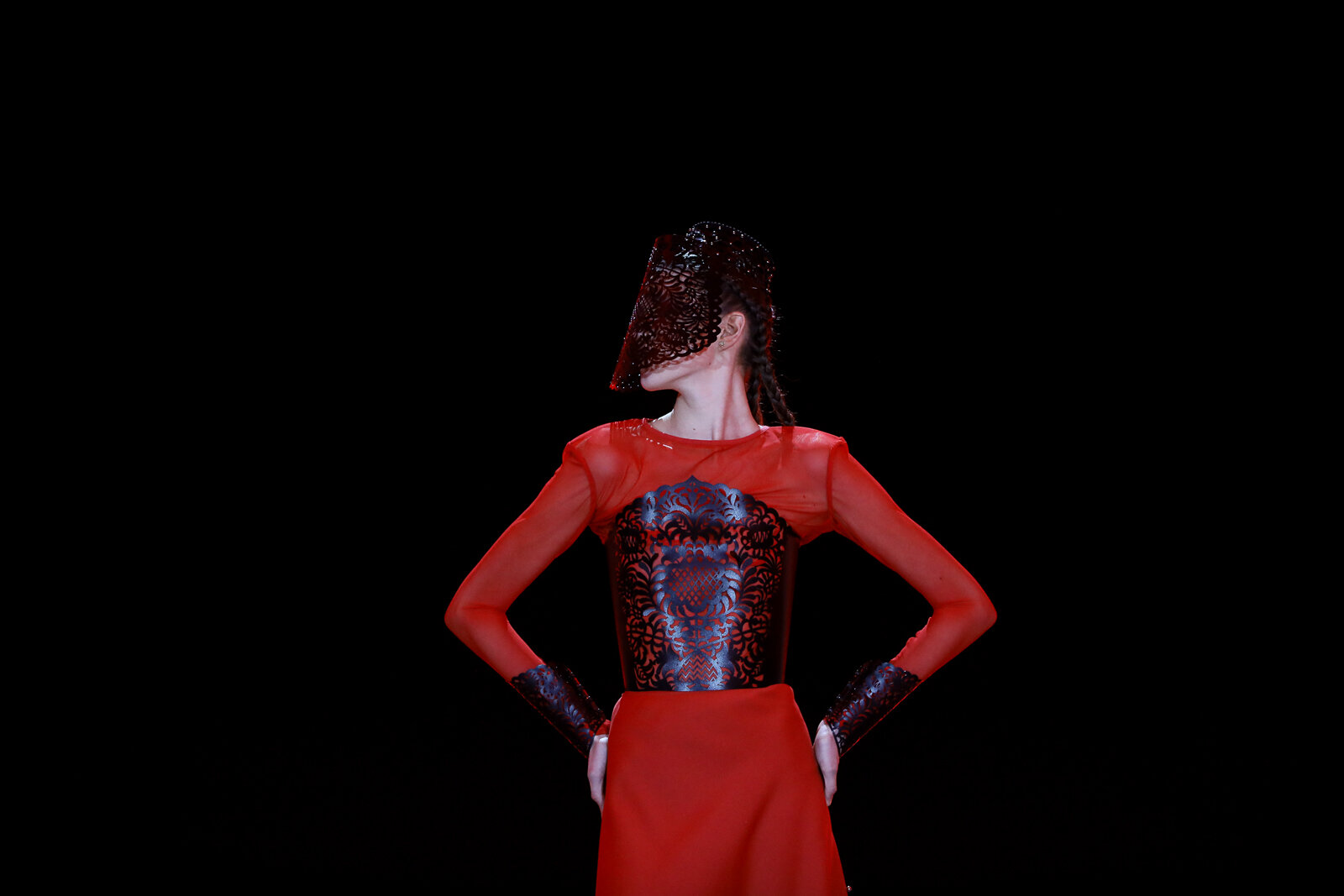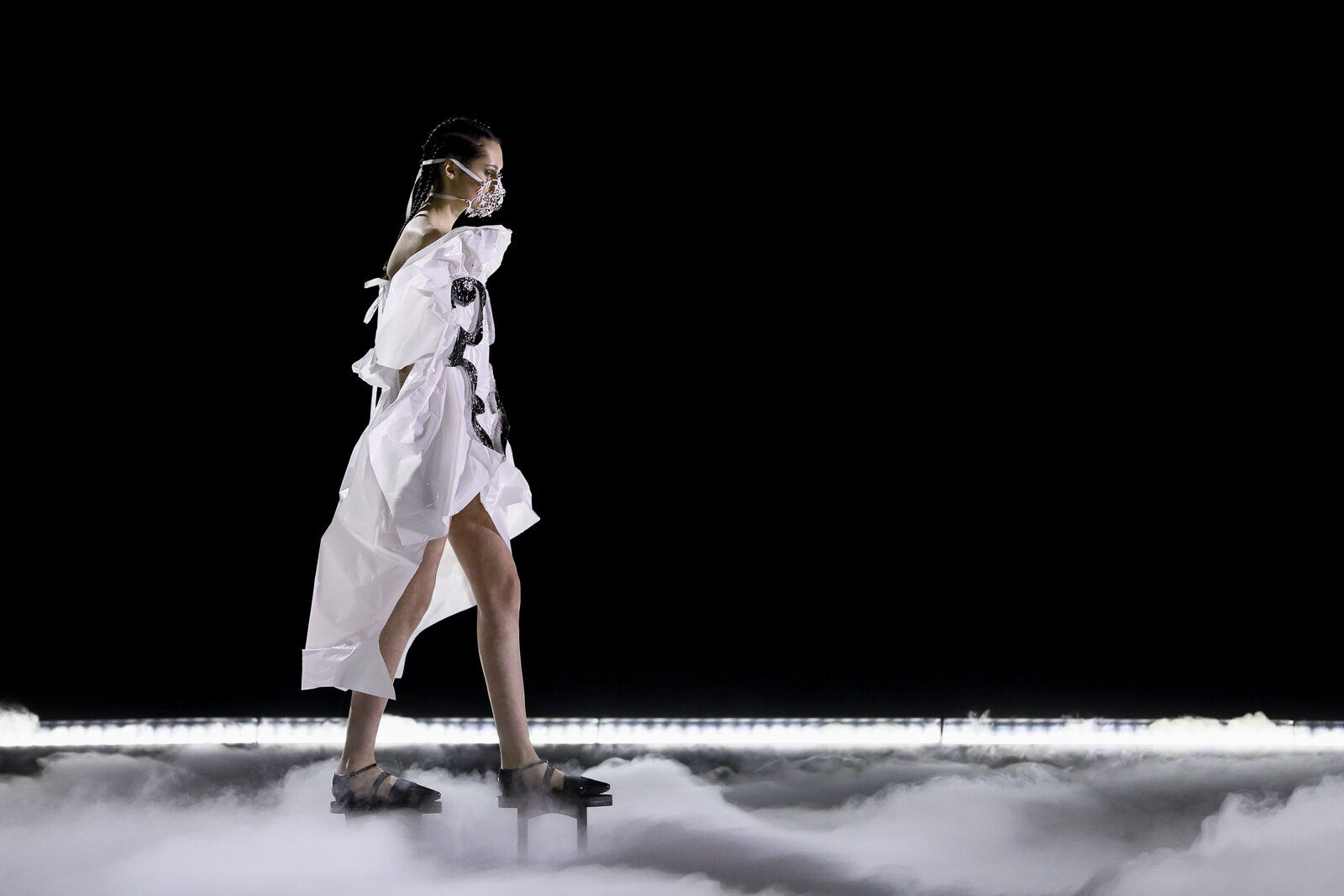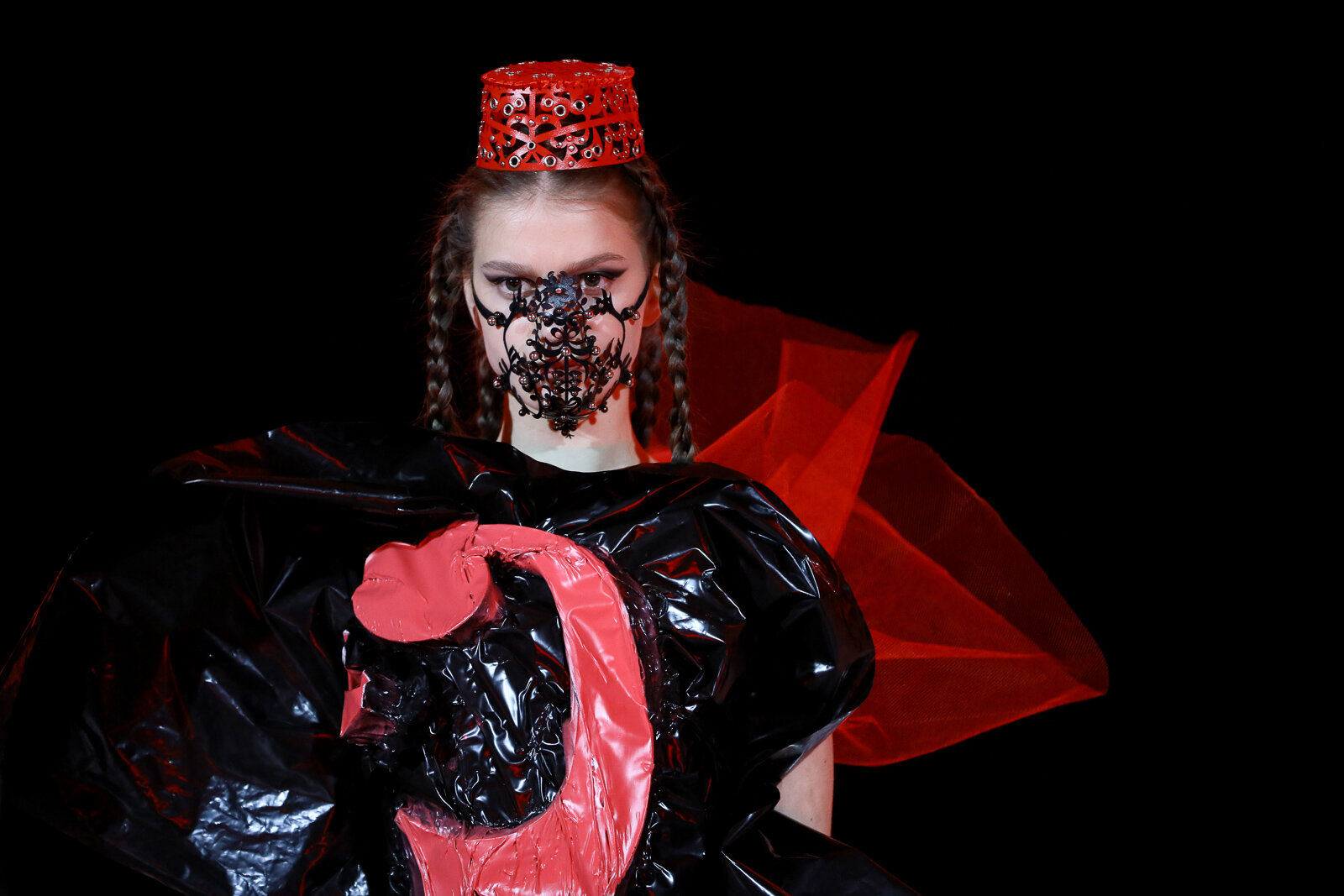Garments from the new collection by Ukrainian designer Polina Veller are unlikely to be spotted on local fashionistas.
But the intricate plastic corsets, carved masks and 20-centimeter-tall wooden shoes weren’t designed for practicality.
Inspired by Crimean Tatar culture, the pieces were crafted to remind society of the Russian-occupied Crimea and expose the aesthetics of the peninsula’s indigenous people.
“I am making our fashion community appreciate Crimea and give it further light,” Veller told the Kyiv Post.
The “Oyma” collection, named after the traditional Crimean Tatar carving technique, was presented at the Ukrainian Fashion Week on Feb. 7.
Running with no physical audience and broadcasting pre-recorded shows online, the industry’s main event made designers push their creativity to innovate and adapt to the new climate the coronavirus pandemic has created.
In an unintended turn, Veller not only pushed her own creativity but the cultural boundaries within the highly-conservative Muslim community of the Crimean Tatar people.
Remembering Crimea
Veller has a long history of creating conceptual projects. Her previous works have included a collection showcasing decommunization, where she supported Soviet artists but not Soviet symbols. Her earlier collections explored her Ukrainian roots through ethnic Ukrainian designs.
The message of the “Oyma” collection was remembering Crimea that had been annexed by Russia seven years ago.
The designer was born in Ukraine, but her father comes from the peninsula, so Veller feels a deep connection to Crimea.
An artist himself, her father too would break boundaries and wear skirts in his youth. “That’s where I get it from,” Veller says.
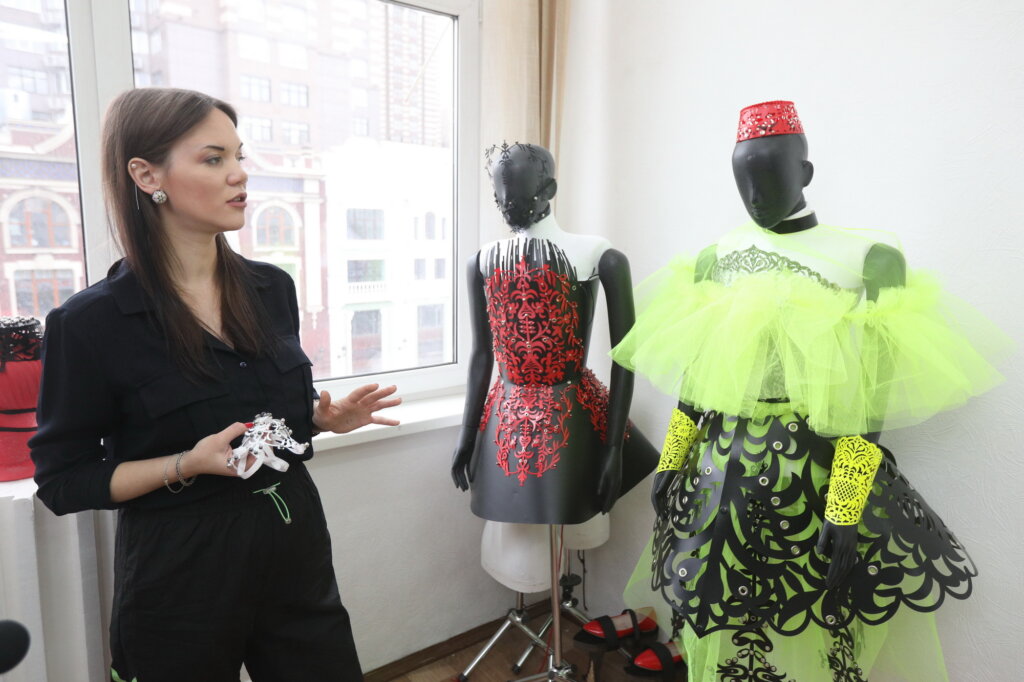
Ukrainian designer Polina Veller shows pieces from her most recent “Oyma” collection inspired by Crimean Tatar culture, as she speaks with the Kyiv Post at her Kyiv workshop on Feb. 23, 2021. The collection was presented at the recent edition of the Ukrainian Fashion Week. (Kostyantyn Chernichkin)
Though she has no direct relation to Crimean Tatars, the designer created the aesthetic of the collection under the impression of the oyma technique, recognizing and giving tribute to the ancient Crimean Tatar artistry and production.
To make sure her pieces pay no disrespect to the culture they originated from, Veller teamed up with Crimean Tatar artist Rustem Skybin.
A pottery artist and a cultural and historic consultant, Skybin designed traditional ornaments for “Oyma.”
Together the two wanted to remind the collection’s audience of the occupation.
“Our message visually and psychologically, was that we are thinking of Crimea. We are worried,” Skybin told the Kyiv Post.
Modern twist
Veller kept traditional aspects of Crimean Tatar design such as the cylindrical peakless fez hats the models wore and the sleeves that hugged their wrists.
The shoes were also historic pieces: Traditionally worn by Crimean Tatars during bad weather or at the bathhouse, the wooden platforms have been used as far back as the Ottoman Empire.
But the collection took its own modern path of experimentation. The ornaments that are usually found embroidered on traditional Crimean Tatar clothing that hangs in museums were carved into corsets made of recycled plastic.
The boldly colored black, red, white and neon yellow plastic twisted and turned around the models, giving some of them sharp shapes around their waist and leaving others with open shoulders and skin.
Hair braided into tiny hanging braids is a symbol of an unmarried woman in Crimean Tatar culture. A bride in all white finished the show, paying tribute to how important weddings are in Crimean Tatar culture, lasting three days at a time.
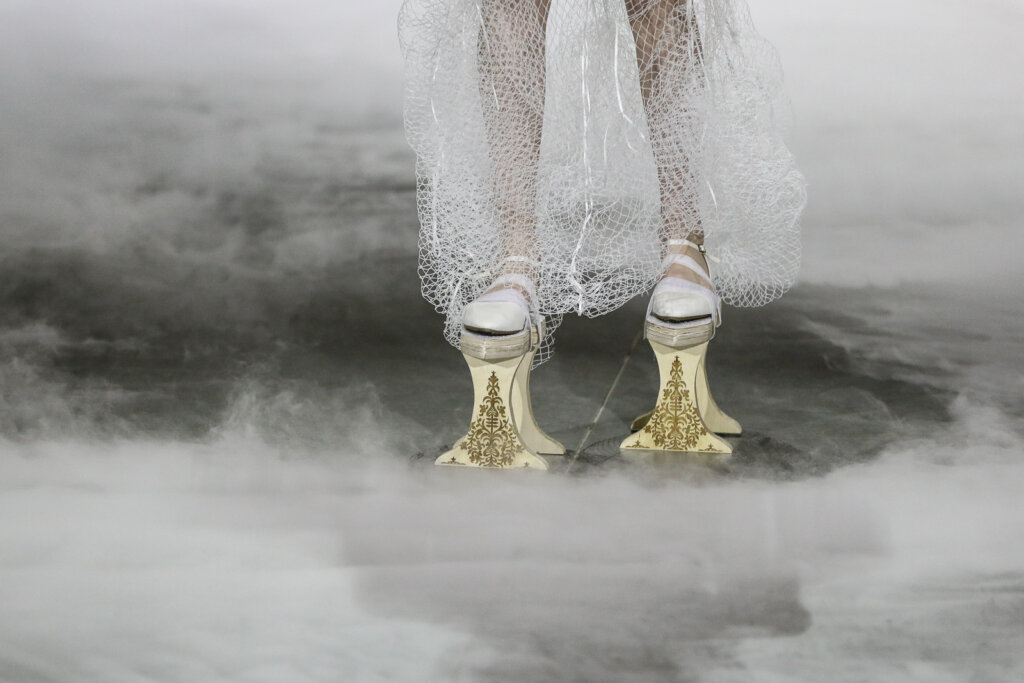
A model walks the runway wearing traditional wooden Crimean Tatar shoes during the presentation of the “Oyma” collection by designer Polina Veller at the Ukrainian Fashion Week on Feb. 7, 2021. The wooden platforms were used as far back as the Ottoman Empire in bathhouses and on bad weather days.
Balancing on wooden frames, the models walked down the runway to Crimean Tatar music with intricate non-traditional masks made of the same plastic, ornamented with pearls, pins and metal beads covering their mouths or entire face.
Veller had been twisting and turning her plastic ornaments and happened to make a mask. Although the masks had no association with traditional Crimean Tatar design, after a year of living through the coronavirus pandemic, the look felt appropriate.
“Of course it’s artistic, it wouldn’t be saving anyone,” Veller says. “It just shows the beauty of the ornaments and of itself. It’s not something to utilize.”
Holding onto what’s left
Veller’s collection was praised by the fashion industry and other creatives. But there were mixed reactions in the same community it is trying to appreciate.
Many Crimean Tatars, especially the older generation, were shocked by the “Oyma” designs. Some comments online criticized the collection saying that it didn’t accurately reflect what Crimean Tatar clothing should look like according to their conservative culture and religious ideals. The clothing showed too much skin or wasn’t humble enough. It was too strange, too foreign to be recognized as Crimean Tatar, nothing like the usual traditional costumes that cover a woman’s ankles, neck and wrists.
Some were not happy with the music that Crimean Tatar composer Ismail Kurtumerov wrote specifically for the show because it wasn’t traditional enough and had electronic sounds incorporated.
“It’s incredibly complicated, it’s a small society called the Crimean Tatars. And they won’t let their own people manifest it,” Veller says.
Crimean Tatars are a mainly Muslim culture, but with various degrees of interpretation. There is a conservative minority that wears headscarves, and the majority that is more open, even fine with drinking alcohol.
But the main reason for the pushback was the cultural grip in the Crimean Tatar community.
Crimea has experienced tragic cycles of violence and sorrow throughout its history, from the 1944 deportation that killed half of the indigenous population to Russia’s illegal occupation in 2014 and continued repressions. Throughout all of this, much of Crimean Tatar’s history has gone missing. Physical artifacts and art were lost, burned and destroyed, not leaving much to interpret today.
Whatever is left is carefully conserved and held on to tightly.
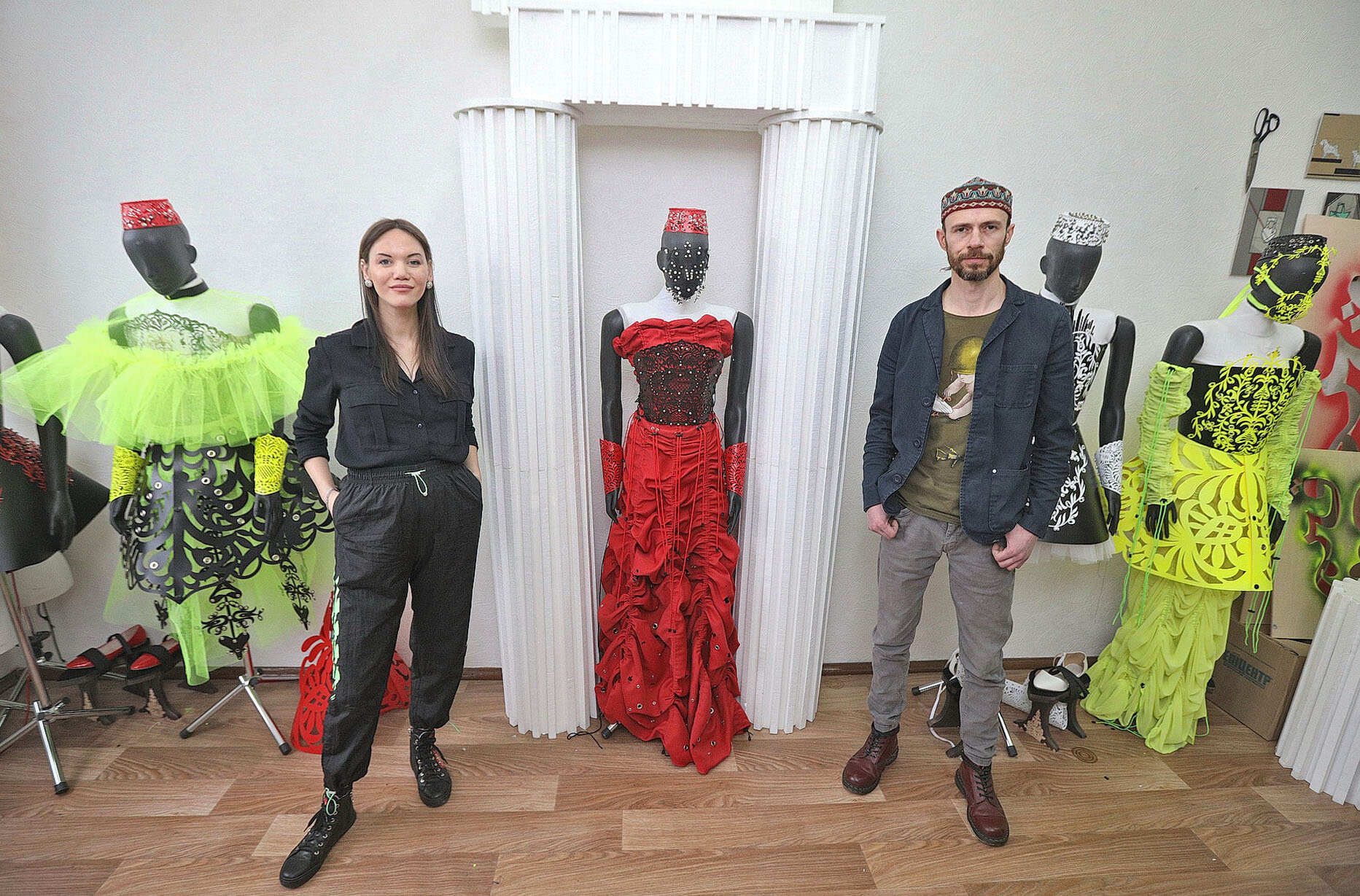
Ukrainian designer Polina Veller and Crimean Tatar artist Rustem Skybin pose for a photograph in Veller’s Kyiv workshop on Feb. 23, 2021. The two teamed up to create “Oyma,” Veller’s recent collection that was inspired by Crimean Tatar culture. (Kostyantyn Chernichkin)
“We have a deep trauma that has formed, and it does not allow us to further open up and move,” Skybin says. “Everything that is new, from the point of view of the people, is perceived as a kind of globalization threat, an erasure of our identity.”
Veller and Skybin carefully conveyed and showed their appreciation of Crimean Tatar symbols and artistry in the collection — from the look of the final bride to the vines and plants repeated throughout the ornaments.
But Skybin believes that Crimean Tatar culture needs actualization, while its community should make a step toward progress. With “Oyma,” Veller showed that Crimean Tatar heritage can be part of modern culture.
“Thanks to Polina (Veller) we were able to actualize it,” Skybin says. “It’s important to us as a people.”
Veller hopes that it’s just the beginning of the Crimean Tatar cultural revival.
“I hope that after this, other designers will also push with their own collections and ideas,” the designer says. “There might be more of a chance for some change, for becoming bolder.”

